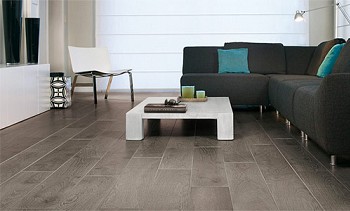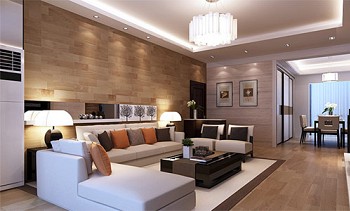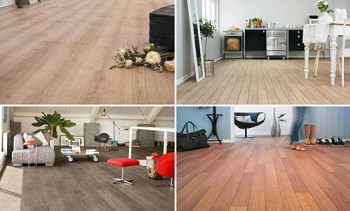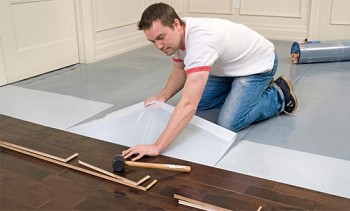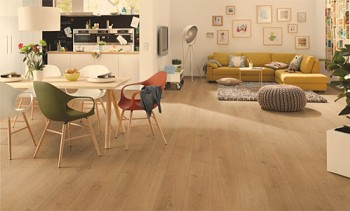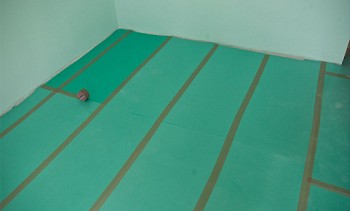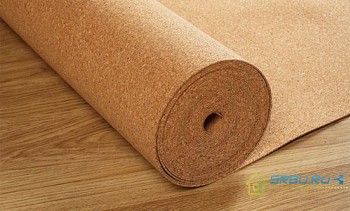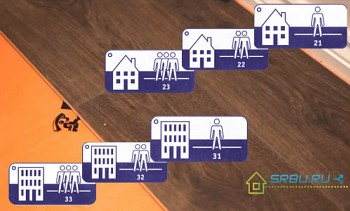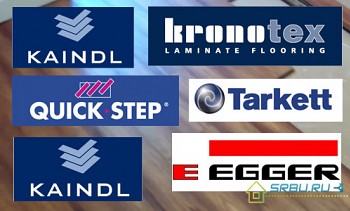Laminate flooring which is better and more practical
Which substrate under the laminate is best suited for your base, taking into account its practicality and durability of the laminated coating, we will talk about these subtleties in this article. Laminate, as a building and finishing material, is now at the peak of popularity. After all, it is quite durable and is perfect as a floor covering.
Moreover - laying laminate flooring is possible even for someone who is inexperienced in these matters and has not encountered this material before. What can I say - the laminate has several advantages over other materials.
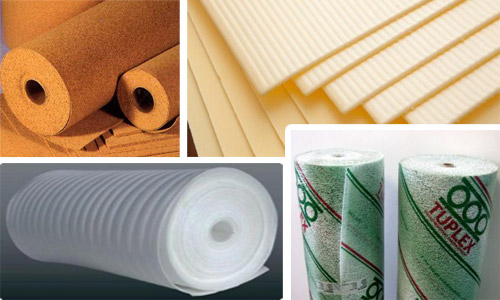
Why are substrates needed and what are the requirements for them?
It must be remembered that in order for the laminate floor to be really beautiful, before laying this material it is necessary to achieve an almost perfectly flat surface of the base, on which the laminate will be laid. It may seem that there is no simpler task. Those. it is enough to achieve an even surface of the base and start laying the laminate with the floating method, in which a "monolithic board" is formed, not rigidly connected to the base.
True, not everything is so simple. Just try to walk on such a floor in high-heeled shoes, as you can hear a loud clatter, as if it were not a man, but a horse. The service life of such a coating is not long, after 2-3 months there will be a play in the joints of the laminate, and then the floor will simply begin to bend and knock on the base.
In order to prevent such an incident, a substrate is usually placed under the laminate, the thickness of which lies within 2-4 mm. The substrate is designed to smooth out the unevenness of the base, to be something like a shock absorber between the laminate and the screed, and also to suppress the noises that begin to appear when walking on the laminate.
Today, most substrates for a laminate are porous and afraid of moisture. The exception is only Duplex and bitumen mastic. If the substrate will be laid on plywood sheets, then additional moisture insulation is not necessary. If the parquet board and the laminate are laid on the screed, then due to the temperature difference, condensation begins to appear on the screed.
In this case, it is strongly recommended that a PVC film with a thickness of at least 0.2 mm be laid under the substrate. To determine which substrate is best suited for the laminate, consider the technical characteristics, as well as the advantages and disadvantages of each type of substrate.
Foam polyethylene backing
Foamed polyethylene is a fragile material and if it has been under load for a long time, it tends to compress. Foamed polyethylene is sold in rolls. In general, this material is considered the cheapest for the substrate and is very easily torn.
After about 10 years, the foamed polyethylene begins to gradually disintegrate, and from it it is no longer material for the substrate, but a powder that poorly “holds” moisture and transmits heat. And if we add here the fact that these rolls could lie in warehouses for 2 years, waiting for their buyer, then the remaining service life is even less. When choosing foamed polyethylene as the material for the substrate, one must pay attention to its density. If the density is good, then its quality is high and the service life will be long.
Like any material, this type of substrate has both advantages and disadvantages.
+ The advantages of foamed polyethylene include the following:
- it is moisture resistant;
- has good noise insulation characteristics;
- stacks easily and quickly;
- strips of foamed polyethylene are interconnected using tape;
- cheap.
- However, this material is not without flaws. These include:
- poor mechanical strength;
- compression under heavy loads.
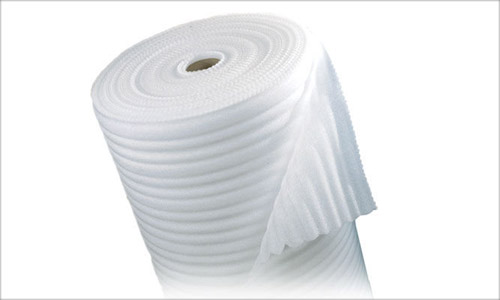
Roll of foamed polyethylene.
Polystyrene as a substrate
Polystyrene has almost the same characteristics as polyethylene, but some parameters are many times better. The thickness of polystyrene is 3 mm and it is usually used as a substrate in those houses where the floor covering should have enhanced heat-insulating characteristics, for example, in a private house. Polystyrene is sold in meter-by-meter boards. A pack is usually 10 sheets of polystyrene.
In some cases, the polystyrene substrate has 2 layers. The first is polystyrene, and the second is aluminum foil. These layers are interconnected. In the process of laying, you must ensure that the foil is always on top. The connection of the sheets, in this case, is carried out by adhesive tape made of stanol.
+ The advantages of polystyrene include the following:
- it is moisture resistant;
- stack it easily and quickly;
- It has good sound absorbing and sound absorbing properties.
- However, there are the following disadvantages:
- if excessive force is applied to polystyrene, then it can be easily broken;
- at high loads, polystyrene simply compresses and loses its characteristics.
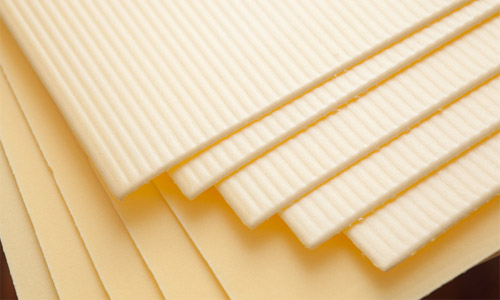
Polystyrene backing. Photo - kinplast.ru
Cork substrates
Such substrates are usually made from cork wood chips, extruding them. This is an environmentally friendly material, because there are no harmful components in it. Apparently, for this reason, such a substrate material is the most expensive of all known. But, being under the laminate, such a substrate is not compressed, and its soundproofing and heat-insulating characteristics are some of the best. Cork substrates can be sold both in the form of plates, and in the form of rolls, which allows you to reduce costs when purchasing this material and thereby save.
+ Its advantages include:
- easy styling;
- good heat-insulating characteristics;
- environmental friendliness.
- However, it has the following disadvantages:
- increased moisture is destructive for him, from it this material just begins to crumble;
- the cost of a cork substrate may be great for some.
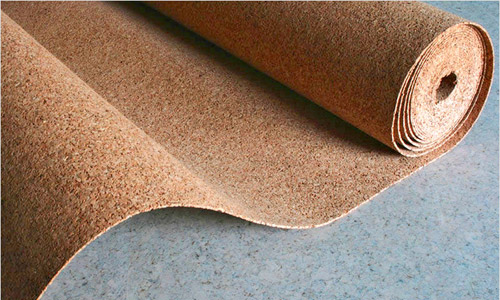
Pressed crumb cork underlay.
Rubber cork backing
This is a mixture of artificial rubber and granular cork. According to some reports, this material is several times better than cork substrate in terms of sound insulation.
Bitumen-cork substrate
To present this material, just look at the Finnish ICOPAL Parkolag material, the basis of which consists of kraft paper impregnated with bitumen and then sprinkled with crumbs of cork wood. This material must be laid down with cork. In this way, micro ventilation under the backing layer can be ensured. In other words, this layer does not allow the formation of moisture. If such a substrate is used, then additional waterproofing is not necessary.
- See the material >> Choose and lay cork under the laminate
Duplex
It is a composite material with a thickness of at least 3 mm, which is made in France. Structurally, it has 2 layers of PVC film, between which granular polystyrene lies. All this is covered with high-strength polyethylene, which is designed for heavy loads and protects the laminate from moisture and dirt. The bottom layer is also covered with polyethylene, but not so strong. But in it there are many micro-holes that allow moisture to pass into the bulk space filled with granular polystyrene.
This is a pretty good material that absorbs noise perfectly. Its laying is quick and it can be used in the organization of warm floors. It is necessary to dock it only on one side, using a special overlap, on which special glue is applied.This material is not subject to deformation, but is very afraid of high humidity.
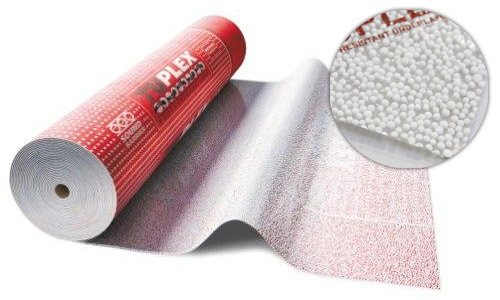
Tuplex substrate.
Bitumen Based Substrate
Despite the fact that this material can be called new on the construction market in Russia, however, its active promotion has already begun. Its advantages include heat, noise and moisture insulation. All this, of course, is good, but it has one, but very serious drawback, which is that the bitumen mastic underlying this substrate is a "hotbed" of formaldehyde. That is why this material is prohibited in many countries. It is interesting that our, domestic manufacturers are silent about this fact.
Which substrate works best for laminate flooring?
So, how to determine which substrate under the laminate is better to use and what parameters to pay priority attention to. As can be seen, there is no shortage of substrates under the laminate at the moment and is not expected. Maybe that’s why it’s not easy to decide on a choice. So, for the correct choice of substrate, the following parameters must be considered:
- ease of laying
- long service life
- not too high price with good quality
As regards such a parameter as the thickness of the substrate, here, in order to avoid excessive depreciation and deflection of the fabric sent, experts recommend using substrates with a thickness of not more than 2-3 mm.
You also need to know that a quality substrate, as an intermediate material, can increase the service life of the laminate. Whatever modification the component composition of the laminate panel has, whether it will include polymer additives or include fiberboard or MDF, in any case, this flooring can be attributed to a wooden floor. Which in turn means that for him it is necessary to provide certain laying conditions, which depend on the substrate.
Video. Substrates for laminate or parquet board

